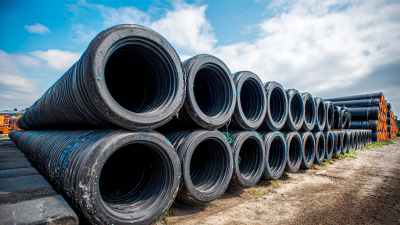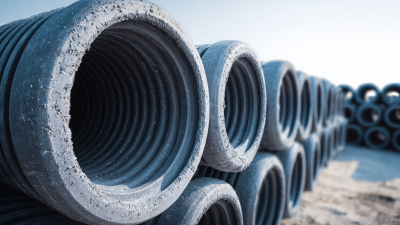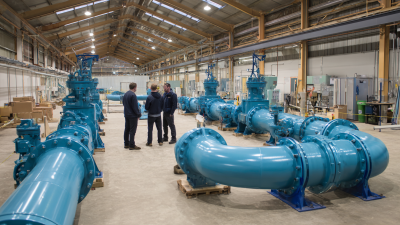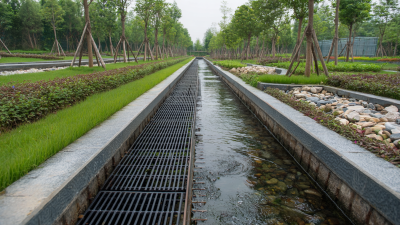Maintaining an efficient septic leach field is crucial for homeowners relying on septic systems, as improper management can lead to costly repairs and environmental issues. According to a report by the U.S. Environmental Protection Agency, nearly 21% of the population in the United States relies on septic systems, with an estimated 60% of these systems potentially failing due to lack of maintenance.

A well-functioning septic leach field not only ensures proper wastewater disposal but also protects groundwater from contamination, supporting healthier ecosystems. With the right solutions, including regular inspections and system modifications, homeowners can enhance the lifespan and efficiency of their septic leach field, ultimately leading to reduced costs and a better quality of life. This blog will explore various strategies to optimize your septic leach field system effectively.
Maintaining a well-functioning septic leach field system is crucial for both environmental health and personal responsibility. Many homeowners may not realize that improper maintenance can lead to system failures, which can be both costly and damaging to the surrounding ecosystem. According to the Environmental Protection Agency (EPA), approximately one in five U.S. households relies on septic systems, and about 10% of these systems fail each year due to lack of maintenance. Regular check-ups and following best-practice guidelines can dramatically reduce these risks.
Homeowners should be aware that practices such as regular inspections, pumping, and monitoring water usage can prolong the life of their septic systems. SepticSmart Week, occurring annually in the third week of September, serves as an ideal reminder for homeowners to take action. The Montgomery County Department of Permitting Services emphasizes that simple maintenance efforts, such as avoiding the disposal of harmful chemicals down drains, can significantly improve system health. By fostering awareness and communal responsibility, residents can prevent widespread failures and ensure their septic systems function efficiently for years to come.
 Septic leach fields are crucial components of onsite wastewater management systems. However, their efficiency can be compromised by several common problems. According to a study by the U.S. Environmental Protection Agency (EPA), nearly one in five septic systems fail within the first 20 years of installation due to improper maintenance and neglect. One predominant issue affecting leach field efficiency is a saturated soil condition caused by overloading the system with excessive wastewater. This can happen if more bathrooms or laundry facilities are added without upgrading the septic system accordingly.
Septic leach fields are crucial components of onsite wastewater management systems. However, their efficiency can be compromised by several common problems. According to a study by the U.S. Environmental Protection Agency (EPA), nearly one in five septic systems fail within the first 20 years of installation due to improper maintenance and neglect. One predominant issue affecting leach field efficiency is a saturated soil condition caused by overloading the system with excessive wastewater. This can happen if more bathrooms or laundry facilities are added without upgrading the septic system accordingly.
Another major problem is the buildup of solids in the leach field. When septic tanks are not cleaned regularly, solids can escape into the leach field, leading to blockages and reduced absorption capacity. The EPA advises homeowners to have their septic tanks pumped every three to five years to prevent such issues. Additionally, the types of materials and household products used can contribute to leach field problems. For instance, excessive use of antibacterial soaps and chemical drain cleaners can kill the beneficial bacteria needed for proper breakdown of waste, further reducing functionality and increasing the risk of system failure. Addressing these common issues proactively can ensure the longevity and efficiency of septic leach field systems.
Recognizing signs of trouble in your septic leach field system is crucial to maintaining its efficiency and preventing costly repairs. One of the most common indicators of a failing leach field is the presence of foul odors. If you notice unpleasant smells in your yard or around the septic system, it may be a sign of overflowing or a blockage within the leach field. Additionally, wet or soggy areas in the vicinity can indicate that wastewater is not being absorbed properly. Puddles or standing water can lead to further complications and should be addressed immediately.
Another sign to watch for is slow drainage in your sinks and baths. If multiple fixtures in your home are draining slowly, it may indicate that the leach field is not functioning effectively, possibly due to clogs or an overload of waste. Regular inspections and maintenance are vital to ensure that problems are caught early. Keeping an eye on these signs can save you from more severe issues down the road, ensuring that your septic system remains in good working condition.
 To ensure the longevity and efficiency of your septic leach field system, it is crucial to adopt preventative measures that address common issues before they escalate. First and foremost, regular inspections and maintenance are essential. Schedule professional assessments at least once every three years to identify any potential problems early. This practice not only helps in detecting clogs or overflows but also allows you to make necessary adjustments, ensuring optimal performance of the entire system.
To ensure the longevity and efficiency of your septic leach field system, it is crucial to adopt preventative measures that address common issues before they escalate. First and foremost, regular inspections and maintenance are essential. Schedule professional assessments at least once every three years to identify any potential problems early. This practice not only helps in detecting clogs or overflows but also allows you to make necessary adjustments, ensuring optimal performance of the entire system.
In addition to consistent maintenance, it’s important to monitor household water usage. Overloading your septic system with excessive water can lead to premature failure of the leach field. Implementing water-saving fixtures and spreading out laundry and dishwashing can significantly reduce stress on the system. Another key tip is to be mindful of what goes down the drain. Avoid flushing non-biodegradable items, chemicals, and grease, as these materials can disrupt the natural processes within your septic system and harm the leach field. By integrating these preventative strategies, you can extend the life of your septic system and maintain its efficiency.
When it comes to maintaining an efficient septic leach field system, understanding the common issues and troubleshooting methods is vital. Research shows that around 10-20% of septic systems fail, often due to poor maintenance or improper installation. For instance, in areas prone to flooding—such as parts of Virginia—rising sea levels can exacerbate problems, leading to sewage overflow and environmental hazards. Implementing proper maintenance practices can greatly reduce these risks.
One effective solution for leach field problems is regular inspection and cleaning, which can prevent clogs and ensure optimal drainage. Studies indicate that routine maintenance can extend the lifespan of a septic system by at least 20 years, reducing the chances of costly repairs. Additionally, communities are experimenting with innovative solutions to better manage wastewater in high-risk areas, which could serve as a model for other regions facing similar challenges. By focusing on proactive measures and community partnerships, it is possible to significantly enhance the functionality of septic leach fields while protecting public health and the environment.






